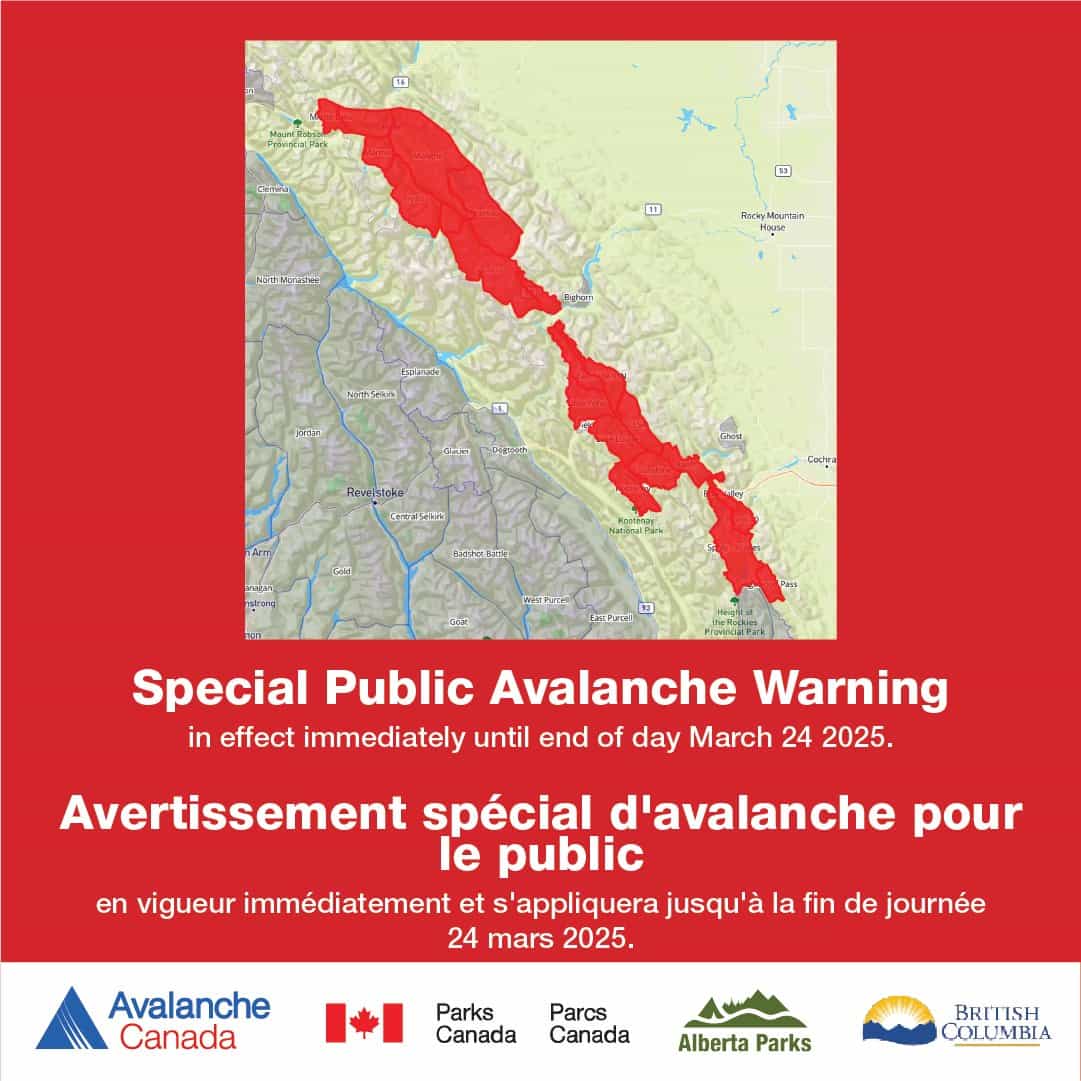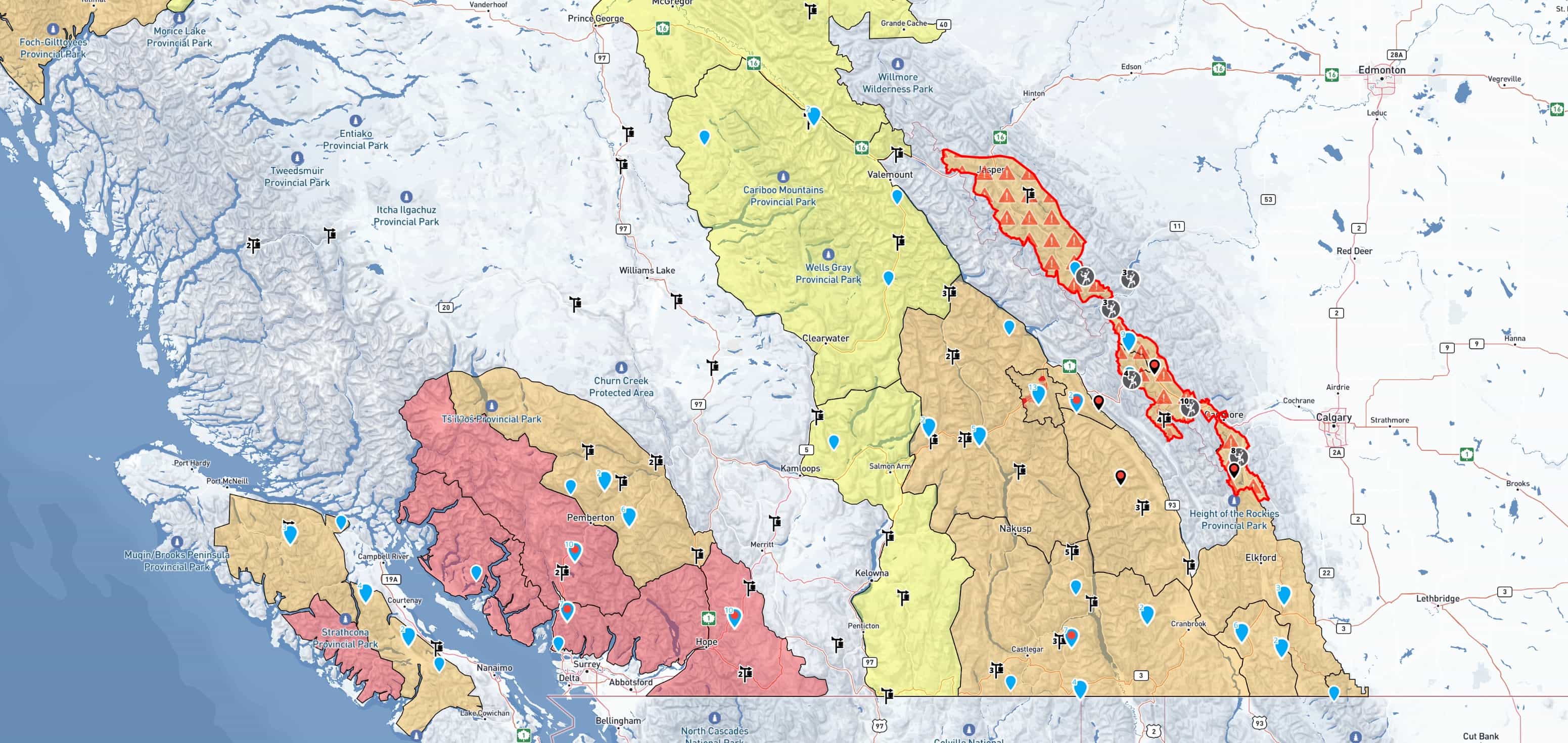
A Special Public Avalanche Warning is in effect for the Central Rockies, including Banff, Yoho, Kootenay and Jasper National Parks, and Kananaskis Country, through Monday, March 24. Avalanche Canada issued the warning in collaboration with Parks Canada and provincial authorities.
“A Special Public Avalanche Warning is in place for Banff, Yoho, Kootenay, and Jasper National Parks, and Kananaskis Country, through the end of day Monday, March 24. Conditions outlined in this warning may also be found in areas immediately adjacent to these forecast regions.
Recent storm snow overlies a weak snowpack structure and has produced numerous very large avalanches over the last two weeks. Avalanches triggered on this layer have propagated widely, even through forested areas, and may involve the entire depth of the snowpack. There have been several serious avalanche incidents in this time, including two fatal incidents. Natural avalanche activity is beginning to taper off, but the snowpack remains primed for human-triggering. These avalanches could be triggered remotely, meaning they could be initiated from a distance. Warming, sun, and stormy weather will all increase the likelihood of triggering an avalanche.
Weak layers, mostly consisting of faceted snow, are buried under up to 90 cm of storm snow, with up to 15 cm more expected by the weekend. This snow will add to slabs over the weak layers, perpetuating an unstable and highly volatile situation.
It is important that backcountry recreationists remain alert to the dangerous avalanche conditions and don’t become complacent as the natural avalanche activity declines. It is essential to choose low-angle terrain without overhead hazard or terrain traps. Avalanches on this layer may run far and release unpredictably, slopes that have tracks on should not be considered safe.”
Recent storms have dumped a lot of snow atop an already weak snowpack, creating a dangerous situation that has already resulted in several large avalanches over the past two weeks. Several serious incidents, including two fatal avalanches, have occurred during this period. While natural avalanche activity has decreased, experts warn that the snowpack remains highly susceptible to human-triggered events.
Adding to the concern is the potential for remote triggering, where avalanches can be initiated from a distance. This phenomenon, coupled with expected warming temperatures, increased sun exposure, and forecasted stormy weather, significantly elevates the risk of avalanche occurrence.
The unstable snowpack consists of weak layers, primarily faceted snow, beneath up to 35 inches (90 centimeters) of recent snow. An additional six inches (15 centimeters) of snowfall expected by the weekend will further affect the instability.
Avalanche Canada strongly advises backcountry users to exercise extreme caution and avoid complacency as natural avalanche activity subsides. The organization recommends sticking to slopes with angles less than 30 degrees and avoiding terrain exposed to overhead hazards or potential runout zones. Or maybe this weekend is the time to stick to the resort. The mountains will still be there next week.
As the warning remains, backcountry skiers must check the latest avalanche forecast at avalanche.ca before heading out. All group members must carry essential rescue gear—including an avalanche transceiver, probe, and shovel—and know how to use it.
